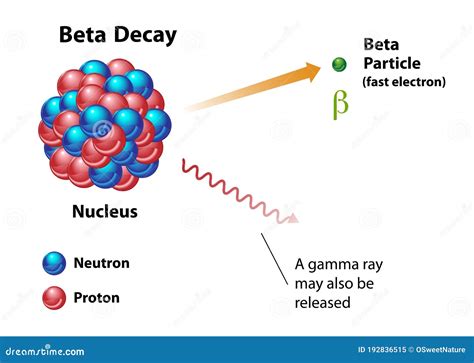what are beta particles|[FREE] Which can have either a positive charge or a negative : Clark Alpha particles consist of 2 protons and 2 neutrons, making them relatively large and heavy compared to other types of radiation. They have low penetration power and can be stopped by a sheet of paper or even the outer layer of human skin. Beta particles: Beta particles are electrons (or positrons) that are smaller and lighter than alpha particles. Mastercard ATM Locator guides you to the nearest ATM location with just a click. Find ATMs from across the world quickly, easily & securely.

what are beta particles,
Beta particles, due to their size and charge, cannot penetrate deeply into materials, including thick packages of food. This limits their potential application for food irradiation because they could not reach pathogens located towards the center of the food. On the other hand, beta particles do not make food radioactive.

Alpha particles consist of 2 protons and 2 neutrons, making them relatively large and heavy compared to other types of radiation. They have low penetration power and can be stopped by a sheet of paper or even the outer layer of human skin. Beta particles: Beta particles are electrons (or positrons) that are smaller and lighter than alpha particles.
[FREE] Which can have either a positive charge or a negative Alpha particles consist of 2 protons and 2 neutrons, making them relatively large and heavy compared to other types of radiation. They have low penetration power and can be stopped by a sheet of paper or even the outer layer of human skin. Beta particles: Beta particles are electrons (or positrons) that are smaller and lighter than alpha particles.what are beta particles [FREE] Which can have either a positive charge or a negative Alpha particles consist of 2 protons and 2 neutrons, making them relatively large and heavy compared to other types of radiation. They have low penetration power and can be stopped by a sheet of paper or even the outer layer of human skin. Beta particles: Beta particles are electrons (or positrons) that are smaller and lighter than alpha particles.what are beta particles In the context of nuclear decay or radioactivity, the type of radiation emitted by carbon would be beta particles. Carbon-14, a radioactive isotope of carbon, undergoes beta decay, which involves the emission of beta particles. Beta particles are high-energy electrons or positrons that are emitted from the nucleus during radioactive decay. Beta Particles: Beta particles are electrons or positrons, much lighter than alpha particles. These particles can penetrate paper but are stopped by metals like aluminum. Therefore, a thin sheet of metal can block beta particles from reaching the target. Gamma Rays:
Because alpha particles have a positive charge, they cannot have a negative charge. Beta Particles (β): These are essentially electrons that carry a negative charge (-1). In beta decay, a neutron in the nucleus transforms into a proton and emits a beta particle. Hence, beta particles always have a negative charge. Positrons:
Beta particles are indeed related to electrons, but the statement 'a beta particle is an electron' can be somewhat misleading. Beta particles can refer to two types: Beta Minus (β-): This is the most common type of beta particle, which is a fast-moving electron that is emitted from the nucleus of a radioactive atom during beta decay. When a . Beta-plus (β+): This is a positron emitted when a proton is converted into a neutron, decreasing the atomic number by one while the mass number remains unchanged. Both types of beta particles have a negligible mass similar to that of an electron and carry a charge of -1 for beta-minus and +1 for beta-plus.

Therefore, the particles that can have either a positive charge or a negative charge are beta particles and positrons. Beta particles (as electrons) have a negative charge, while positrons are positively charged. In summary, during radioactive decay, particles can have different charges, and the ones that can have either positive or negative .
what are beta particles|[FREE] Which can have either a positive charge or a negative
PH0 · [FREE] Which can have either a positive charge or a negative
PH1 · [FREE] What type of radiation is carbon emitting in the following
PH2 · [FREE] Sam says that beta particles are not used to irradiate food
PH3 · [FREE] A target is shielded from a radioactive sample by a sheet
PH4 · Which type of radiation can pass through most thin layers, such
PH5 · What symbol is used for a beta particle?
PH6 · What materials will block beta particles?
PH7 · True or false: a beta particle is an electron